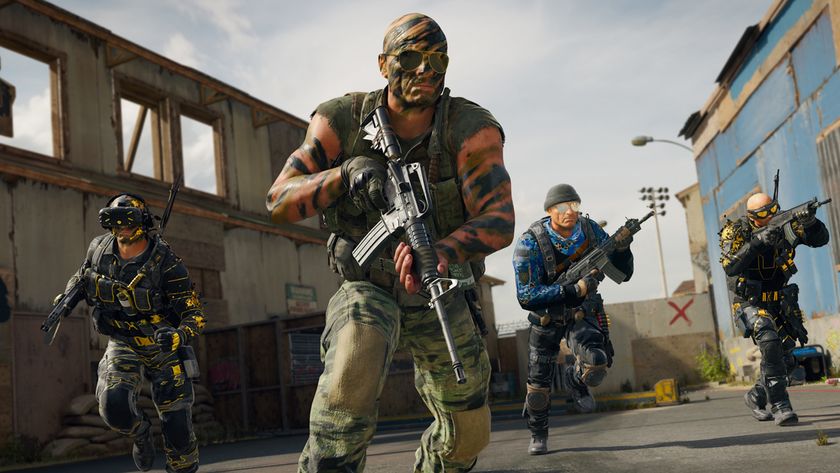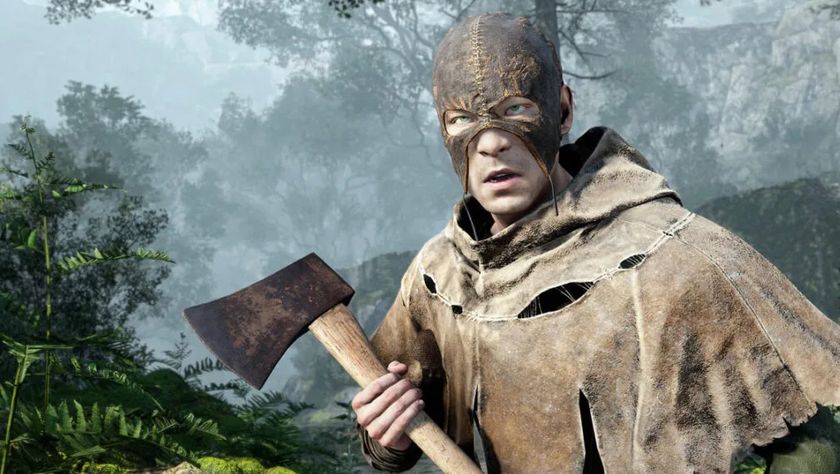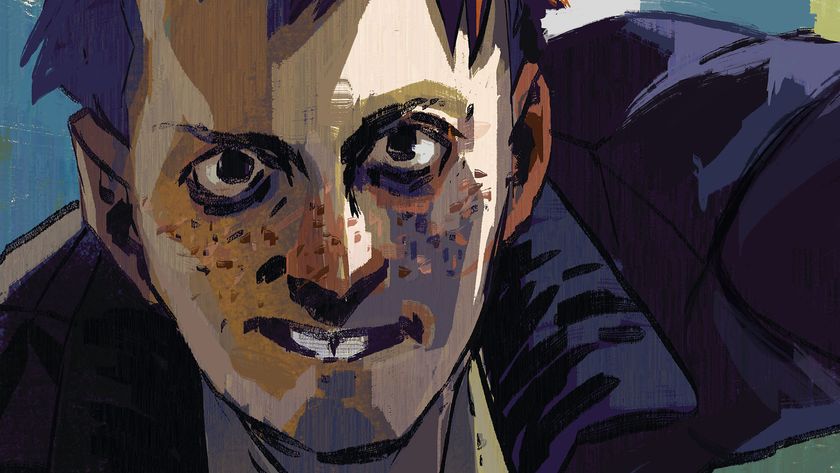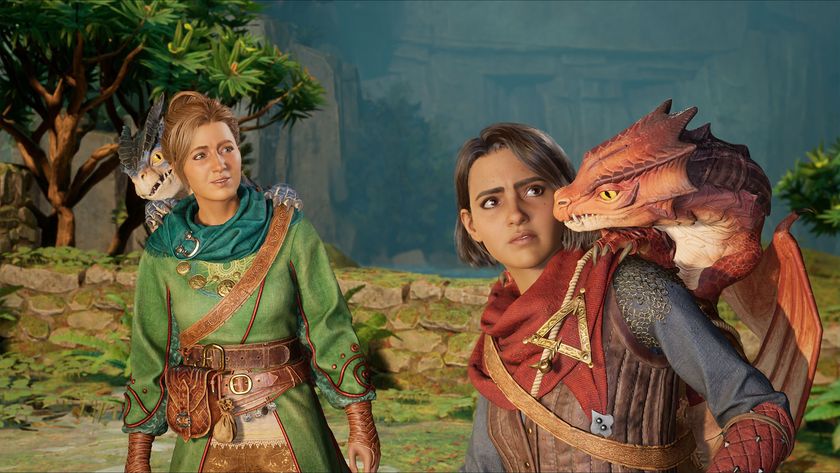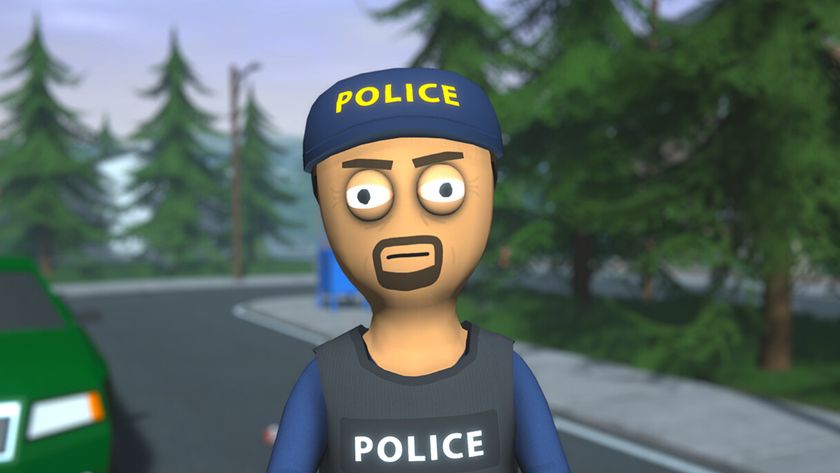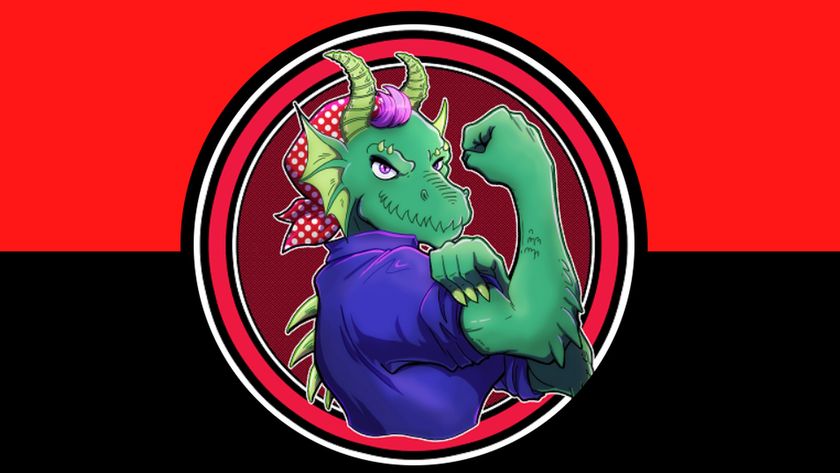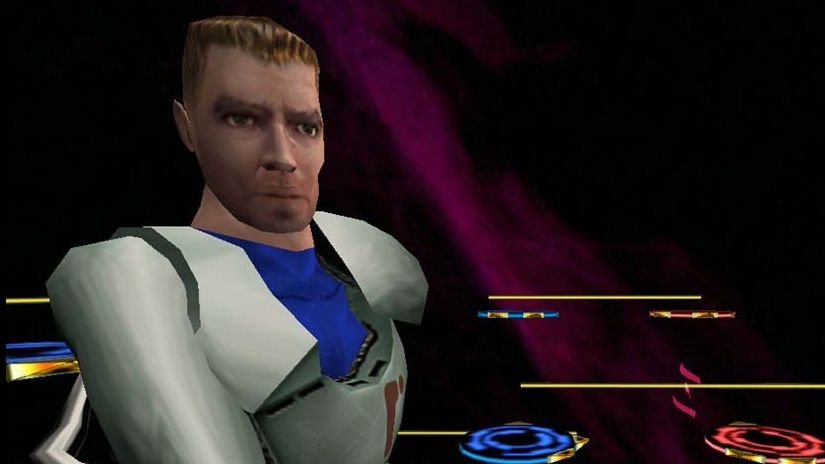Interview: Ken Levine on player movement, Disneyland, and how BioShock Infinite's villain compares to Andrew Ryan

In part one of my interview with Ken Levine , we talked about BioShock's expression of racism and American history. In today's excerpt, I ask Levine about BioShock's unique, theme-parky presentation of narrative elements, player movement, and about Infinite's villain, Father Comstock.
PCG: I enjoyed picking up on the parallels to the original BioShock while playing Infinite. One of the things I noticed was the recurrence of museum-style and theme park-style presentation as a narrative device. The standees, plaques, animatronics. What do these things offer you as storytelling devices?
Levine: I think it's a combination of things. I was always… I got my storytelling, visual storytelling, interactive visual storytelling, the first rumblings in my head, when I was a kid going to the Haunted Mansion. Or Pirates of the Caribbean. I remember, when I first played Half-Life, I realized, “Oh! It's effectively that.” And in System Shock 2 we aped a lot of that as well. You're in this experience that has some interactivity to it. Obviously our game has a lot more interactivity than the Haunted Mansion, but you could look wherever you wanted to go. Part of the joy of it, to me, was “I just caught that, and maybe the other guy didn't.” I think the Disney setup… I'm not a Warren Spector who loves every Disney character, but that had a big impact on me as a storyteller. That idea of catching stuff. So I'm speaking on the larger sort of visual storytelling method that we use.
"I got my storytelling, visual storytelling, interactive visual storytelling, the first rumblings in my head, when I was a kid going to the Haunted Mansion. Or Pirates of the Caribbean."
Museums are just… They're designed to convey information to you. They're a useful trope in a video game if you want to get information across, in the same way that audio logs are confessionals. That's why they're so convenient, and why I use them. I didn't invent them, but it was a great invention that Austin Grossman came up with in System Shock. I've leveraged them ever since. They play less of a role in this game because we do so much of the storytelling through the world, but they're still very important for the backstory. But they're a confessional. They're saying exactly what's on their mind. You don't have all those barriers in conversation. When Booker and Elizabeth are talking, they can't just be like, “I am Elizabeth. This is what's on my mind.” An audio log is very much about that. Museums can likewise exactly say, “This is what's on my mind,” in a way that most of the world can't.
It's a device that allows you to show rather than tell in a lot of situations.
Levine: Yeah, and show very quickly, very efficiently. It's definitely a trope we've used. It's not just that we really love museums. There's a story… How far are you in the Hall of Heroes?
Near the end; I'm about to go into the First Lady's chamber.
The biggest gaming news, reviews and hardware deals
Keep up to date with the most important stories and the best deals, as picked by the PC Gamer team.
Levine: So you've learned about Booker and how he relates to Wounded Knee and everything. That was a great way to talk about Booker's past. To talk about the Battle of Wounded Knee, there's a lot of work you have to do to explain that. They could have had a lengthy conversation about the Battle of Wounded Knee. But it's so much better to visually get that data across, and then all Booker had to say, or Elizabeth, or somebody, is, “He was there.” It's an important part of the story. We wanted people to get it. Most people aren't history buffs like I am. We had to figure out a way to tell that story, and through the lens of Columbia, of course. It's a fairly… It's a stylized telling of what happened at Wounded Knee to say the least, but it was important that we have that.

The Sky-Line is one feature that doesn't have a counterpart in previous BioShocks. What brought about the decision to do something relatively few first-person games do—attempting a new form of player movement?
Levine: It's not something we have thought a lot about before. Our games traditionally didn't have a lot of interesting movement. There was Tribes , but that was somebody else's innovation. But we knew that this game, set in the sky, without a strong element of movement… It would feel like it was missing something. And then it was like, okay, what is it? Is it flying? Well, people have done that. To some degree, it's lost some of its original thrill, from back when played the first flight sims. Is it jetpacks? People have done that too. I had to work on a game with jet packs. Not that there's anything wrong with it. I just thought that we needed to innovate. So we threw out jetpacks. I thought, “That's not very BioShock-ey. We need to do something different.”
"There's a thrill, on a roller coaster, of sort of being in control and not being in control."
And then I thought of… There's a thrill, on a roller coaster, of sort of being in control and not being in control. Because you are on a track, but you always feel like you're going to not be on that track in a second. Even though you know it's probably 99.9999999 percent safe, people scream every time they go on it. The thought of fighting on one of those seemed very exciting to me. You can probably tell that amusement parks and Disneyland, those things had a huge impact on me when I was a kid. Even now, I still go to fairs. I still love going to town fairs and seeing all the carny rides and stuff. I don't go on them anymore very much, because I'm old now. [laughs] But I love the look of them and the feel of them. I love the aesthetic of them. Especially old wooden roller coasters. I thought that would be a thrilling way to experience movement in this world.
But in terms of the state of movement, I think it's… It's tough. Tribes, for instance, the jetpacks in Tribes, that is a deeply advanced control system for the average gamer to master. It is moving arbitrarily, roughly, in 3D space with an imperfect device. It's not like levitation or anything. But it's really fun for the people who get good at it. It's all about the skill of movement, very much so. When the original Halo came out, it did a great job of bringing movement into the experience. The Warthog and the Ghost. But they really shook up the first-person shooter space. We had to do something different, and there hasn't been a lot of innovation in movement in a long time. This is our modest attempt at that.
I agree with you about Halo. The low gravity gives you time in the air to pivot or think, in combination with the shield. You see that adopted by games like Borderlands. Anyway. Can we talk about the anachronisms present in Infinite? The contemporary song that you hear very early on. The “Revenge of the Jedi” theater we get a glimpse of through one of Elizabeth's tears. Are these occurrences building toward a more significant event in the game?
Levine: What's going on in the city with those things and Elizabeth and the tears are absolutely… They're not just… They're actually central to the plot of the game. I've always felt that to incorporate your game systems into your… The game systems and your narrative have to be interwoven. You didn't just find magic powers in Rapture. They were very tied in to what happened with the city. They were very tied in to the vision of the city, these people trying to perfect themselves and the hubris of that. But that's tied into the splicers and your powers and everything that happened to you and who you were. Elizabeth's story and the tears and why she was in that tower and what her powers mean are central to the game.
So I guess the answer is a very big yes. Some aspects of it are more important. Some aspects help explain the idea, get the idea across. We really had trouble explaining, even to the press, exactly what the tears were until we did that thing at E3 with the Revenge of the Jedi thing. Obviously it evolved into a slightly different form in the actual game, now that you're playing the actual game. But it very quickly explained a lot to people, in a very clear way, what was going on. Some of these things are just useful for conveying information, and some of them are useful as part of a larger mystery.

Do Rapture and Columbia exist in the same reality?
Levine: I have evaded this question for a very long time, and I will continue to evade this question. I think that the mysteries of this game… When we first announced this game, there were some people who said “Take-Two just forced them to call it BioShock. It's not really a BioShock game.” And some people say, “Oh, it's just Rapture in the sky.” We knew we would get a lot of that. From a gameplay perspective it's definitely connected, and some of the themes probably feel very similar, but in terms of the specifics, I'll leave that to the gamer's experience.
How would you say that Comstock differs as a character and as a villain—if you consider him a villain—compared to Andrew Ryan?
Levine: Well, I think it's an interesting background. It took me a lot longer to understand Comstock than it did Ryan. I'm not like either one of them, but I come from a more similar background to an Andrew Ryan. I was an entrepreneur. My family's of eastern European Jewish descent. I have some libertarian leanings myself, although I'm certainly not an Objectivist by any stretch of the imagination. But at least I could understand the appeal of his message very clearly. I'm not a religious person, though, and it was critically important to me that I spend… I probably spent more time thinking about this issue than almost anything. I need to understand the appeal of the message. It couldn't just be a transformative, ecstatic moment of religion, because I never had that. I had to understand it on a deeper level. That may not be clear to you yet, what his appeal is to the people and why that's important to the game.
"It took me a lot longer to understand Comstock than it did Ryan."
They're very different. On the surface you'd think they're totally opposite. One is an industrialist, capitalist atheist. The other one is a nationalist, religious, charismatic, prophetic figure. But the thing where they're very similar is that they both have a singular world view that is, they believe, all-encompassing. This ideology of “my way or the highway.” They're very confident in that ideology. I think that's why these worlds feel similar, even though one's at the bottom of the sea and one's in the clouds. They seem very opposite, and yet they're reflections in some ways as well, from an ideological standpoint. They are so rigid in that approach. Ideologies are more similar along their rigidity scale than they are along the scale of their particular ideas. A rigid ideology of any kind tends to reflect another rigid ideology. Less rigid ideologies tend to reflect other less rigid ideologies.
They both reflect the dangers of isolation, right? They're very isolated communities.
Levine: Yeah. They're intellectually isolated communities, certainly. Ryan banned Bibles. I'm sure Comstock wouldn't be too happy with an eastern European Jewish figure spreading the word of atheism in Columbia.
MORE: What I loved about BioShock Infinite | What I didn't love about BioShock Infinite

Evan's a hardcore FPS enthusiast who joined PC Gamer in 2008. After an era spent publishing reviews, news, and cover features, he now oversees editorial operations for PC Gamer worldwide, including setting policy, training, and editing stories written by the wider team. His most-played FPSes are CS:GO, Team Fortress 2, Team Fortress Classic, Rainbow Six Siege, and Arma 2. His first multiplayer FPS was Quake 2, played on serial LAN in his uncle's basement, the ideal conditions for instilling a lifelong fondness for fragging. Evan also leads production of the PC Gaming Show, the annual E3 showcase event dedicated to PC gaming.
